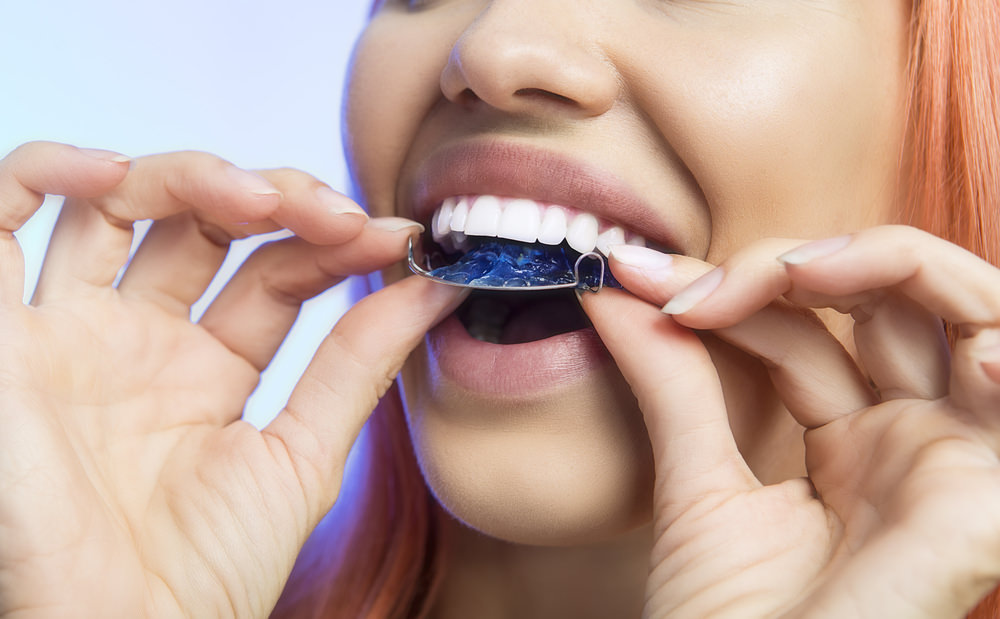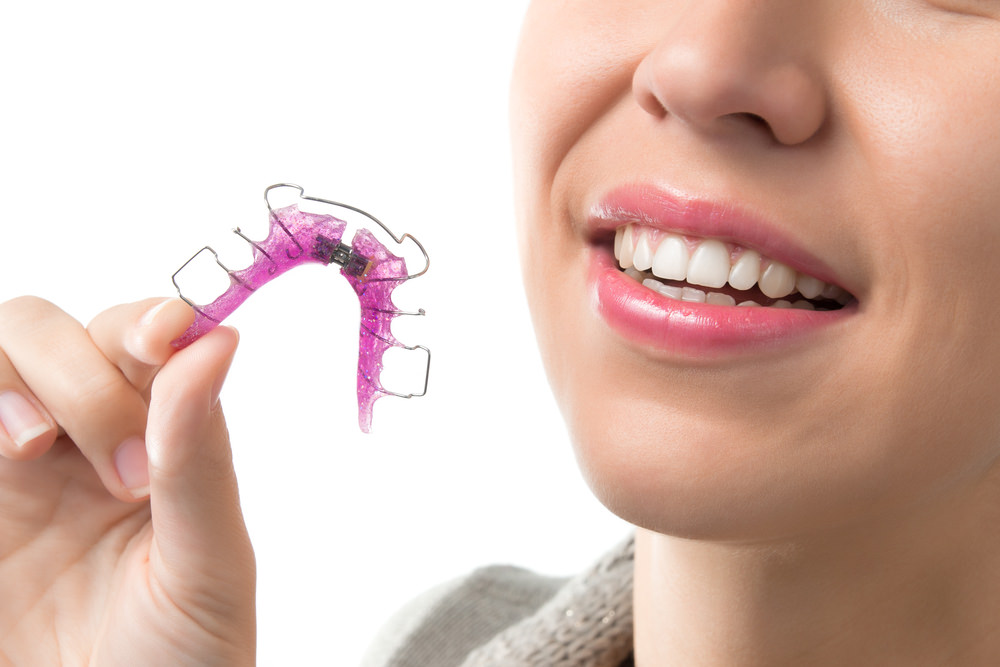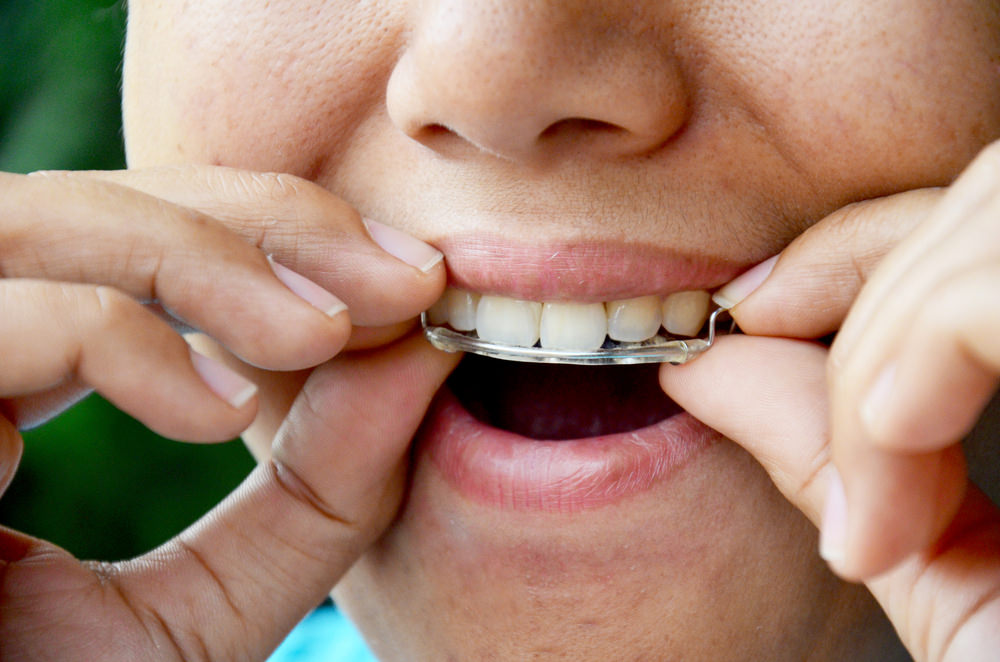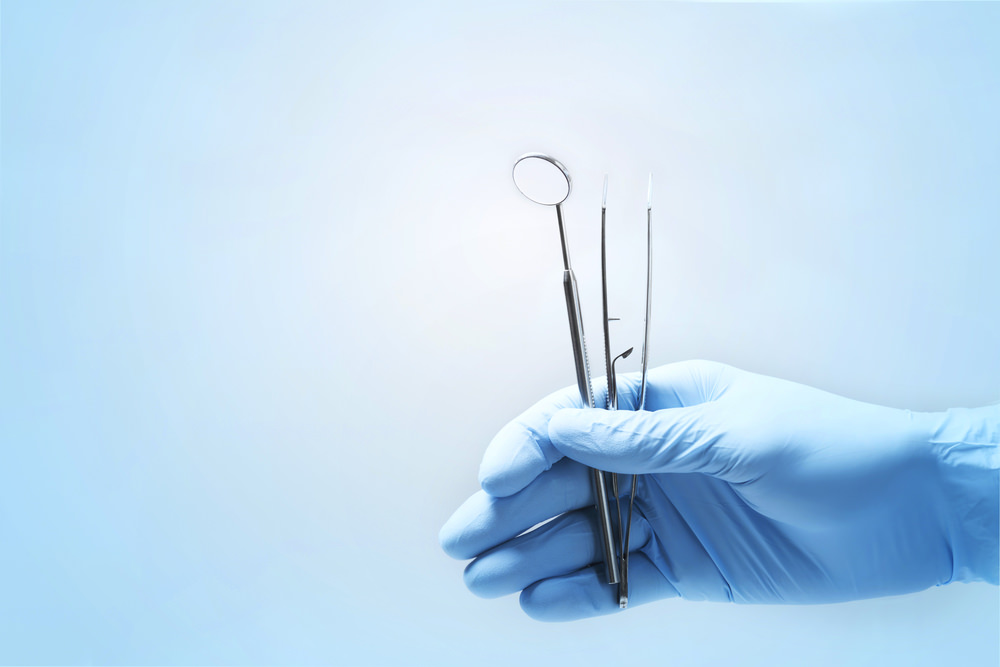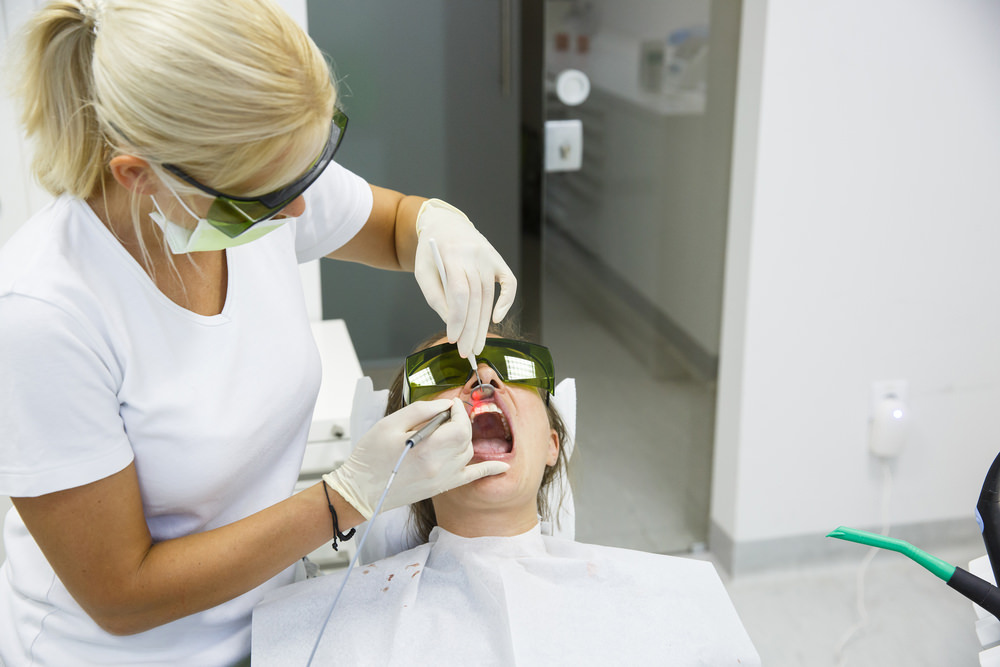Wearing Retainers – The Definitive Guide
A question that a Dentist commonly gets asked is – how long do you need to wear a retainer for?
If you remove a retainer, your teeth may want to move back to their natural position. So, to keep a straight smile, I suggest that you wear your retainer on a regular basis, forever.
In this post, I discuss and answer the following common questions;
- What happens when you wear a retainer for years?
- When do you stop wearing a retainer?
- How much do Retainers cost?
- Do you need to ‘upgrade’, or buy a new retainer?
When Do You Keep a Retainer Permanently?
Though there are a few different types of retainers, a common choice is a bonded (permanent) retainer.
Many patients get these fixed the day they have their braces removed. A permanent wire retainer is glued into place at the back of the upper or lower front teeth.
If retention of the teeth into their new position is not effective then the teeth may relapse into their old position.
The forces of biting, smiling, talking, swallowing and tongue position are all forces that act upon your teeth to return the teeth to their original position before your orthodontic treatment.
So, your Dentist or Orthodontist upon removal of your braces, or another orthodontic device will put into place a way of preventing these forces from pushing the teeth back and this relapse from occurring.
The type of retainer you choose depends on your needs. For instance, some of our patients choose a combination of both bonded (permanent) and removable retainers.
Because these relapse forces affect the upper and lower teeth differently bonded retainers are a more common choice on the lower teeth.
The upper arch could collapse from the side depending on sleeping positions and other habits it is more common to have a hard acrylic removable retainer for the top jaw.
This type of retainer not only keep the teeth in position but also keeps the arch form symmetrical.
Permanent retainers are a great, simple option for keeping your teeth straight, as they are attached to your teeth, unlike removable retainers.
So, if you think that perhaps you might forget to wear the removable retainers, now or in the future, this could be a good option for you.
Now, there is no specific time period for wearing a permanent retainer, but it isn’t entirely “permanent”. Some patients have been known to wear theirs for up to 20 years, others for only a couple of years.
This is dependent on each patient’s tolerance and comfort level.
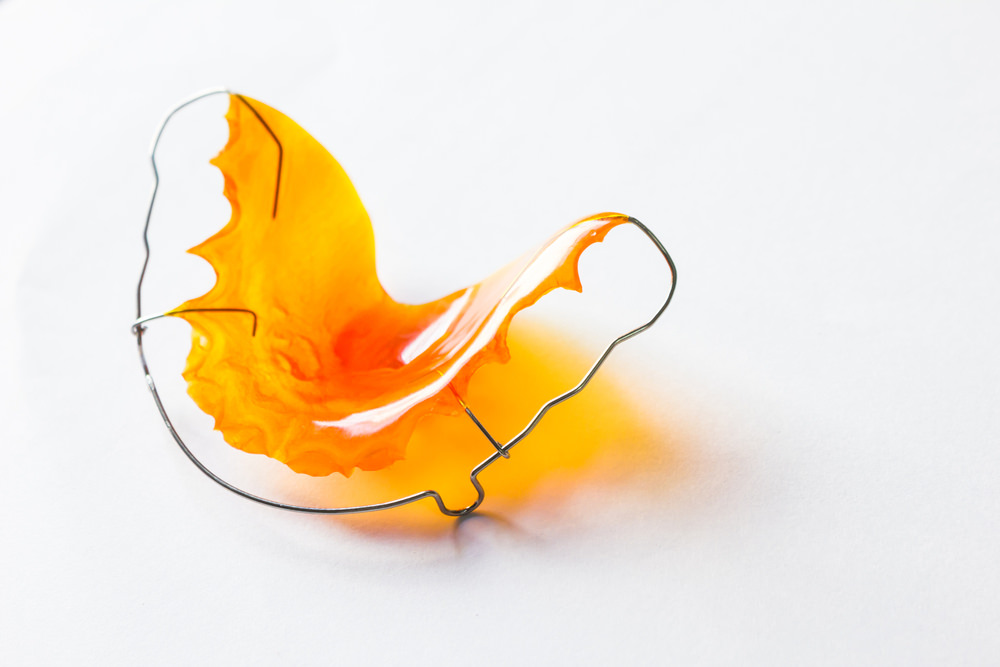
A Hawley Retainer
What Happens After You Wear a Retainer for Years?
When it comes to retainers, just like your teeth, every person is different.
So, who wears them and how long they must wear them differs.
In this way they are similar to braces – some people only need to wear braces for a short period of time, while others need to wear them for years. Every requirement is based on every individual case by needs and comfort levels.
If you have severely crowded teeth or an increased overbite, where the compatibility of the jaws is in question then these cases may be more challenging to keep in alignment.
Meaning, your teeth are more likely to move around rather than stay in position. So, you may have to wear a retainer for longer than others.
That is, some people only have to wear them for 6 – 12 months before your Dentist or Orthodontist will advise you that you can reduce your wear from full-time to every other night, then 2- 3 times a week.
Other people will have unwanted movement even after wearing a retainer for years.
So, even if you are wearing a permanent (bonded) retainer, your Orthodontist or Dentist may ask you to regularly come back in so they can review your retainer.
If your child is growing then the operator will need to review the case until growth has been finalized.
After all, our teeth move naturally as well. They do so through general wear and tear, as we age, throughout pregnancy, or if we have bad habits such as grinding teeth or biting our nails, thumb sucking and other oral habits.
So, your Dentist or Orthodontist will check that you are still wearing your retainers, that they are still fitting correctly, and that you are happy with the result of them.
This means that these reviews are important to go to and be sure to take your retainer with you.
The only way that you can make sure that your teeth won’t move from the desired position is to hold them in place with the retainer for as long as your Dentist or Orthodontist advises.

A dental retainer being fitted to a patient.
What Happens When You Stop Wearing a Retainer?
A common question we get asked is “When can I stop wearing my retainer?”.
It’s easy to understand why when people feel as if they have been taking added care of their teeth for years whilst straightening their teeth with something such as braces at first, and then wearing a retainer.
We understand they want to remove the retainer and just be able to brush their teeth. But unfortunately, it’s not that easy.
Your teeth want to move back to their original location, and retainers stop this from happening.
You see, orthodontics work by reforming the bone that your teeth sit in. The pressure that your initial orthodontic treatment apply, such as braces, result in your teeth and the bone around it moving and restructuring and remodelling.
The restructured bone is at first soft, as it is new and porous, so it takes time to solidify.
Once the orthodontic forces are stopped, your teeth may want to move back to their original location due to the forces of your tongue, lips, cheeks and lips.
As such, a retainer must be worn for as long as you want to have straight teeth.
Old dentistry used to teach that 12 months of retention was long enough for the teeth to learn to ‘settle’ in their new location.
However, with time, research, and more insight into orthodontics, we have learnt this is inaccurate. Your teeth have the possibility of relapsing at any time in the future.
Even once they are settled permanently in their new location, simple everyday things such as chewing, growth, and everyday wear and tear can cause them to move and shift again.
This is especially the case for those who repeatedly push their teeth with their tongue, or have had teeth extractions.
So, unless you want crooked teeth a second time, I recommend wearing your retainer on a regular basis for the rest of your life.
This isn’t as bad as it sounds – your Dentist or Orthodontist will give you advice as to how often you must wear it.
Generally speaking, it is 24/7 for between 6 months to 1 year at first, then this may be cut down to 3 to 5 times a week – but yes, forever. Even if eventually you wear 2-3 nights a week.
The good news is that by this stage it should just be a regular part of your dental routine – just another way to ensure you have a lovely, straight smile.
How Much Do Retainers Cost?
The cost of retainers differs depending upon your specific needs.
But to give you some idea, the average cost of a permanent, bonded retainer varies from $150 – $500.
This means that the most you might pay for retainers on both your upper and lower teeth are $1000.
To put the retainers in initially also costs just as much as replacing or repairing them.
See the sub-heading below for how often you may need to spend this money again to replace or repair them.

An invisible Retainer compared with a Hawley Retainer.
Do You Ever Need to ‘Upgrade’ or get a New Retainer?
Unfortunately, it doesn’t matter how well you clean your retainer.
Just like your teeth, as time goes on, it will probably benefit from some regular maintenance by a professional. Retainers may distort, become loose or simply break.
That means having them taken off, checked, and adjusted by a Dentist or Orthodontist every 1 – 2 years.
But no matter which kind, all retainers will need replacing with time.
Basically, they will wear out so you will need to get a new retainer. Think of them as a pair of shoes – they can last you years, but they will eventually become worn down.
So, the different types of retainers, all with a different lifespan, include:
1. Hawley Retainers
These are the oldest, more popular types of retainers. They are made from a combination of moldable aluminium wire and plastic.
The advantages of Hawley retainers are that they are very long-lasting – many Hawley retainers last more than 10 years.
This is partly because brushing and flossing the retainer and your teeth is still easy.
2. Invisible Retainers
Invisible retainers look similar to those used by well-known companies such as Invisalign.
Though easy to remove, they are not as easy to clean.
Most dental professionals will advise you to get a new pair of these retainers every 6 – 12 months.
3. Fixed or Bonded Retainers
Also known as permanent retainers, these use a metal wire and dental bonding agents to secure the retainer to the inside of your teeth.
These are also very durable. However, brushing and cleaning around the back of your teeth can be difficult, but must be done every day.
If maintained properly, a fixed retainer may last up to 5 years.
If this is not done, the wire may become loose or detach, needing repair or replacing.
How Do You Know When it’s Time to Get a New Retainer?
Well, this could take 1 year or 20 years.
So, although they might seem expensive, if you take good care of them and treat them as an investment you made towards your orthodontics, you can save money in the end.
If you have the removable type (that is, Hawley or Invisible), signs include that it just doesn’t fit well anymore, is no longer comfortable, or is just broken.
If you have a permanent retainer, if the wire has become loose or the glue has come off.
So, there’s no set date for when you will need to upgrade your retainer, it’s more something that you will have to watch out for.
Just lookout for a retainer that has become bent moved, or its’ shape has changed.
Any of these issues also means the retainer will no longer keep your teeth in their correct position.
If you check the position of your teeth and you feel that your teeth have moved then this is also an indicator that you may need a new retainer.
When this does happen, please do not try to fix the problem yourself, as if you apply too much pressure to the retainer, you can fracture the material and damage your teeth.
So, I suggest that you:
1. Call your Dentist or Orthodontist
If your retainer has broken or hurts another part of your mouth, see your medical professional ASAP to reduce the risk of any more damage being done to your teeth, mouth and retainer.
If you can’t afford to have another one made, discuss this with them, and as there may be a payment plan that you could agree to with the aid of your clinician.
2. Research Emergency Contact Details
A lot of Dentists and Orthodontists have an emergency contact line you can call or text if you need urgent treatment.
Ask your Dentist or Orthodontist if they have such a line so you are able to reach them if your retainer breaks and damages you and your mouth.
As always, if you’re not sure if you need to upgrade your retainer or even if you’re wearing it enough, it’s always a good idea to discuss this with your Dentist.
Conclusion
It’s important to follow the instructions of your Dentist or Orthodontist when it comes to wearing your retainer.
Otherwise, your teeth can shift, especially if you stop wearing your retainer before they tell you to.
So, retaining your teeth can be a long journey, but think of it as an insurance policy for your teeth that is worth keeping.
Remember to think about how your teeth were at the beginning and why you wanted to change the position of your teeth.
Having a beautiful smile may need some maintenance and retention is simply that.
By Dr. V
Created at June 10, 2021, Updated at January 25, 2025


